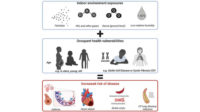Goals for building management and, specifically, indoor air quality (IAQ) standards, have changed dramatically in response to economic and environmental forces. After the oil embargo in the 1970s, building energy use was reduced by decreasing ventilation rates. Unfortunately, turning down air change rates without considering other factors resulted in the unintended consequence of sick building syndrome (SBS). Occupant complaints of SBS diminished as ventilation restrictions eased when energy conservation became part of the broader concept of “sustainability,” meaning the ability of a building to improve the planet, occupant productivity, and the profitability of the business enclosed within the walls.
In the last decade, severe outdoor climate events, such as rain, snow, heat waves, earthquakes, floods, and wildfires, have threatened U.S. and international building stock, resulting in the emergence of “resiliency,” meaning the ability of a building to remain structurally intact in extreme outdoor conditions.
As extreme climactic events continue, global warming from heat trapped in the atmosphere by gas emitted by burning fossil fuels (oil, coal, natural gas) has been recognized as a major driver of severe weather. Predictions for the future, given the current trajectory, are alarming. This has resulted in regulations for building and IAQ management focusing on decarbonization in hopes of reducing greenhouse gas emissions from burning carbon-based fuel. This will be challenging because of our extensive use of oil products for energy, but the potential rewards extend beyond managing weather. Done correctly, decarbonization has the potential to not only slow down the escalation of climate change but to also address some of the other big problems we are struggling with right now. These problems include harm to our health from carbon-based air pollutants, pandemics caused by viruses that mutate and move into human hosts more rapidly with warming temperatures, health inequity across socioeconomic groups, and the economic burden of health care costs in many countries.
What Is Decarbonization?
Decarbonization literally means removing, or at least reducing, the number of carbon molecules emitted in the air.
Reducing the release of carbon combustion byproducts from building and transportation exhaust systems by using non-carbon-based, renewable energy sources is a big part of the decarbonization movement. Other steps are minimizing buildings' energy consumption by decreasing ventilation rates and reducing heat loss by tightening up the envelope. While these changes may result in a smaller carbon footprint, there can also be significant unintended and harmful consequences as evidenced by the rise in SBS in the 1980s.
Recent studies confirm that making building envelopes tighter without decreasing indoor emission of pollutants and appropriate natural or mechanical ventilation can result in an increase in indoor pollutants, occupant disease, and the health cost associated with these illnesses.
Health Inequity and IAQ
People who live in urban areas near roadways or industrial complexes have higher rates of many illnesses. This elevated risk of health problems clearly represents an environmental injustice that burdens those affected with poor health and productivity as well as increased medical expenses. Demonstrating the linkages between decarbonization retrofits, IAQ, and the associated health outcomes is critical to making cost-benefit analyses that avoid deepening health disparities based on geographic locations. Gathering data from multiple stakeholders to fully understand the health consequences of exposure to air pollutants is challenging. First costs of new construction or renovations fall on building owners. Energy conservation is often the responsibility of building managers, and residents or employees experience the illnesses and cost of treatment.
Despite these disconnects, it’s important to understand the downstream health consequences of building decarbonization measures. Several modelling studies based on real-world data from a low-income housing complex in Boston confirmed the need to maintain awareness of IAQ impacts on health while implementing energy-saving interventions. Specifically, the study showed that tightened envelopes without adequate ventilation resulted in increased levels of several indoor pollutants that correlated with increased pediatric asthma exacerbations requiring hospitalization or medication rescues. Conversely, decarbonization coupled with adequate ventilation and indoor pollutant source control predicted decreased asthma attacks in children and a corresponding decrease in medical expenses for the families.
The bottom line is that as decarbonization mandates become increasingly widespread and enforced, the effect of indoor exposures on occupant illnesses, such as asthma, must be understood and mitigated by appropriate ventilation and indoor source control. A comprehensive understanding is especially critical for people with underlying immune systems or other health problems as well as those at either end of the age spectrum. Balancing climate change mitigation with provision of healthy indoor conditions is possible but must be a priority for decision-makers.





